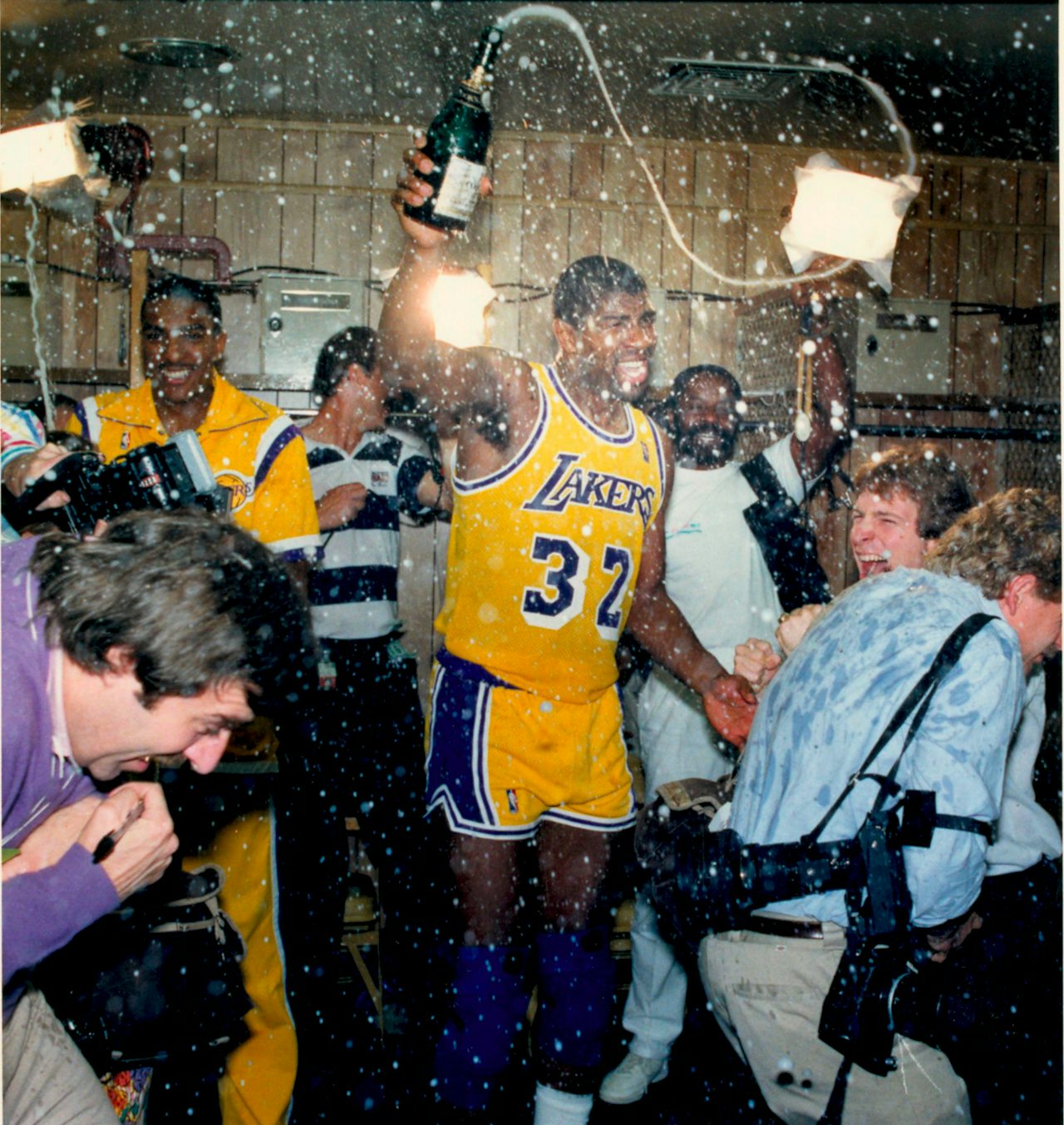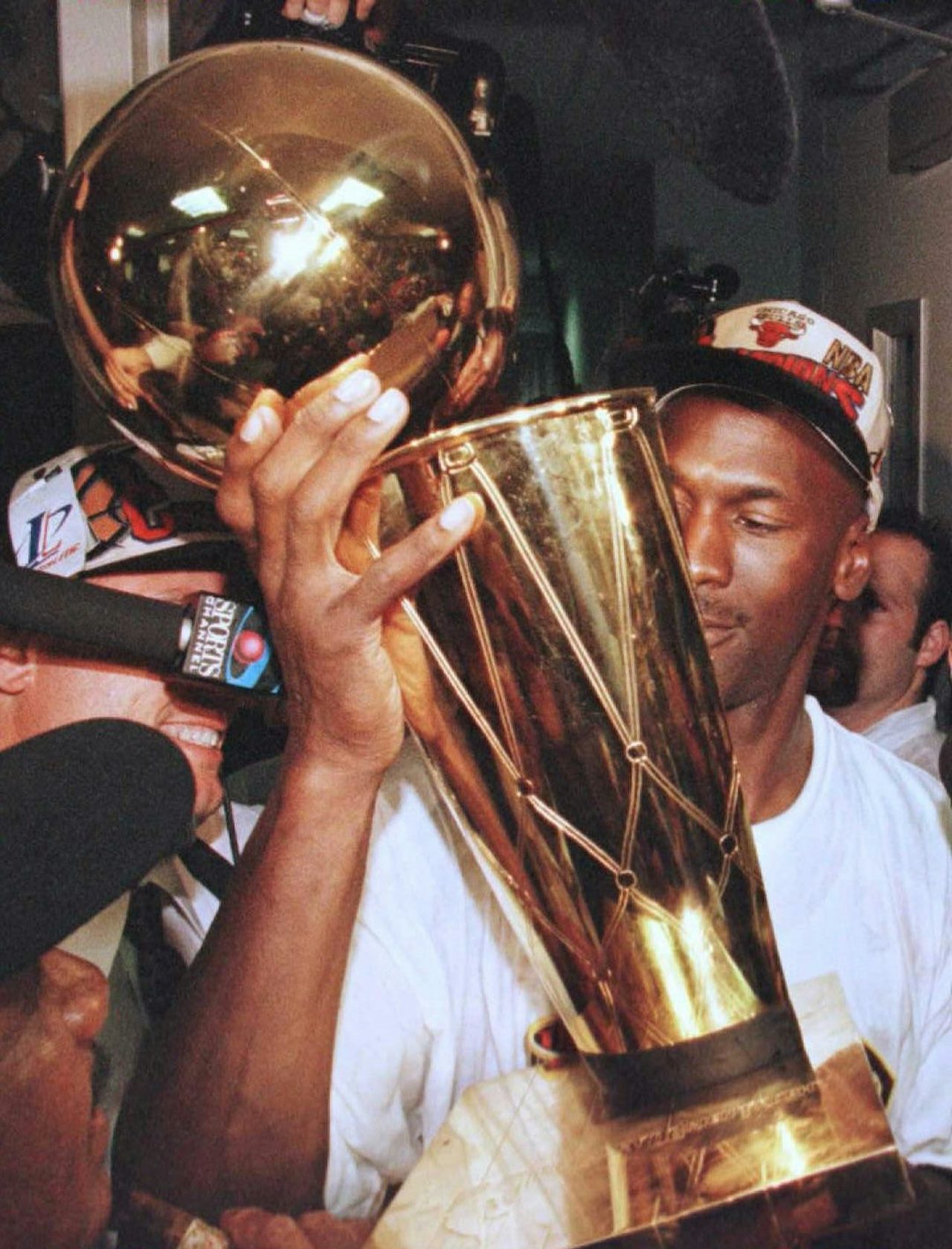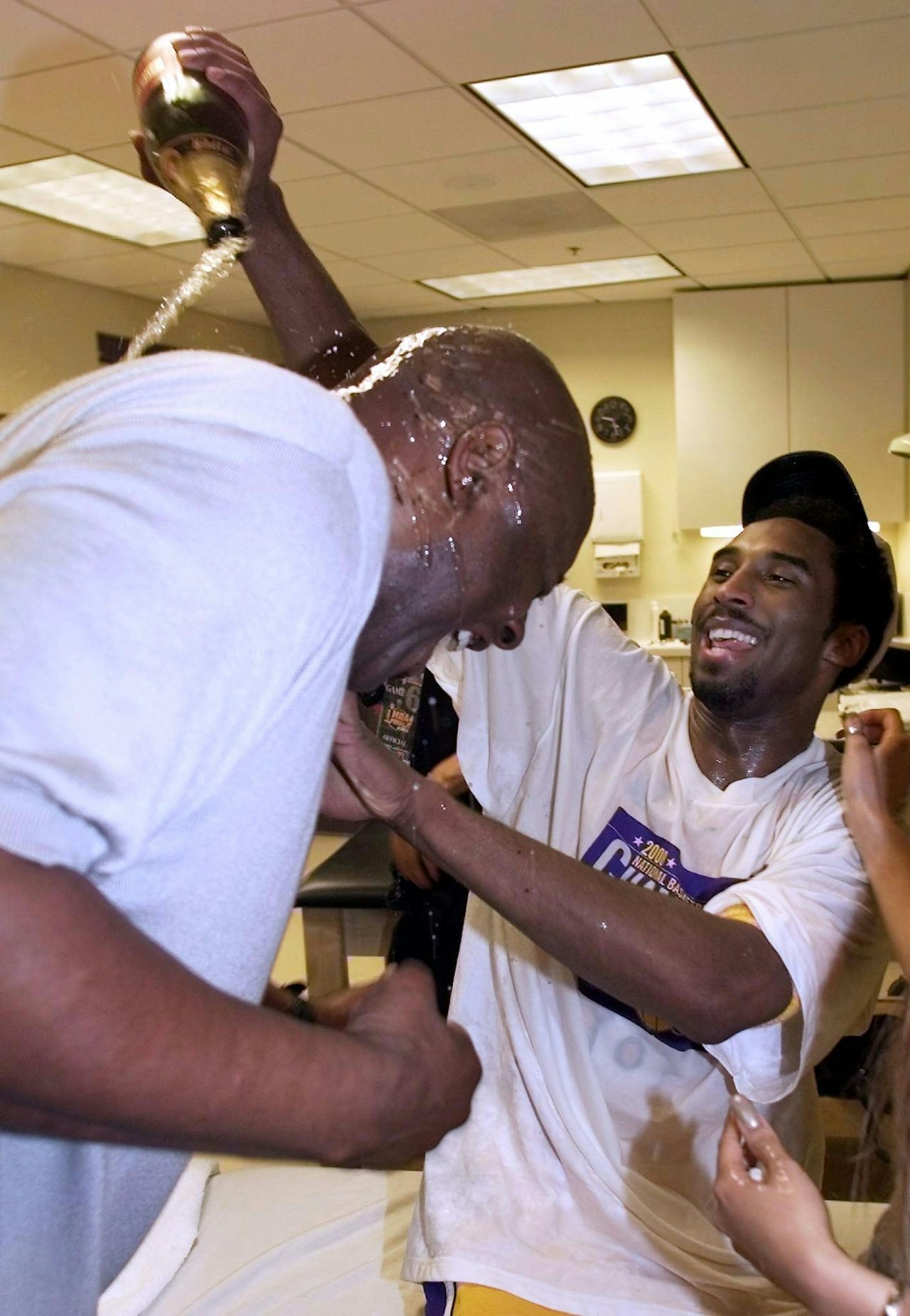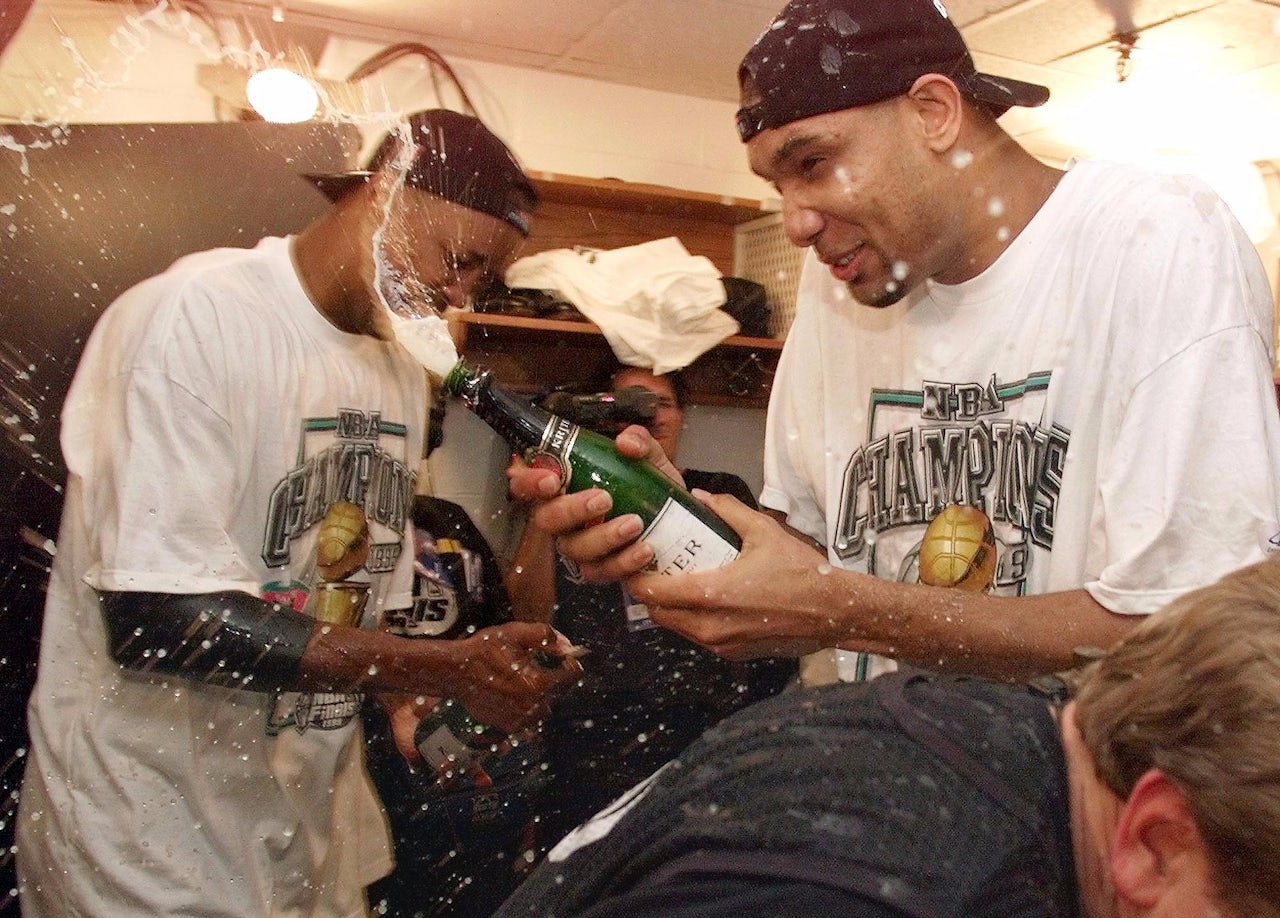The first man I ever saw cry was Michael Jordan. It was 1991, and he and the Chicago Bulls had just won the NBA Finals. But, surrounded by reporters, his teammates, and his parents, he openly sobbed into the shiny gold trophy, clutching it to his chest like a lost childhood toy. That series would go on to be the first of Jordan’s six NBA Championship wins. And while I very well may have been near a TV while it was broadcast live, it wouldn’t make an impression on me until 1996, when footage of the moment was included in the opening credits of Space Jam, a movie I’d go on to watch again at least one thousand more times.
The clip is only about three seconds long, but even years later, it remains striking, simply for showing someone — an athlete, at that — express pure vulnerability and emotion without embarrassment or censorship. That image and so many other triumphant Finals photos get at the heart of what is so often taken for granted: Sports are about trust and triumph, betrayal and defeat. They’re emotional, all-consuming, extremely personal, and that’s why fans love them. Finals are a time when the narratives that have played out over the season are at last given resolution and meaning; this is what all of that time and energy was “for.” Heroes, villains, and underdogs have their last shots at redemption.
Drama aside, there are few places in pop culture where unscripted, unadulterated joy and celebration is put on display quite like sports championships. Where else on TV can you watch an adult who has spent much of their life constructing a persona built on strength shed all of that in a moment, breaking down into tears or celebrating without abandon, because they won a trophy? And where else are you guaranteed that display year after year after year?
Really, the Finals are as much about the moments that happen immediately after the final buzzer as they are about the games themselves. When the last point is scored and the last buzzer is buzzed, the story concludes in celebration or mourning, as all the best things do.
The image of a champagne-drenched champion expressing their joy for all the world to see is enough to touch even those most dismissive of sports, and even for those of skeptical of this year’s superteam match-up. Because really it’s not about a trophy or a sport or a player or a team; it’s about the drama.







